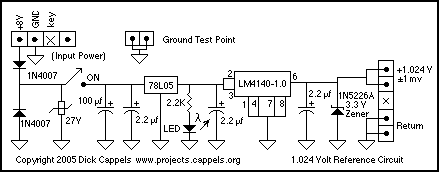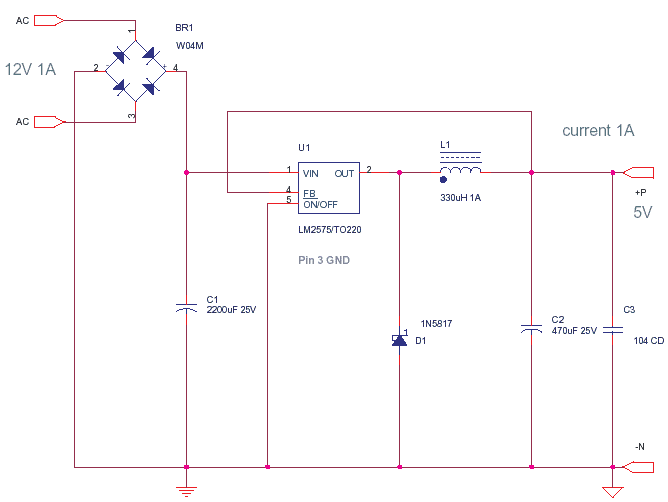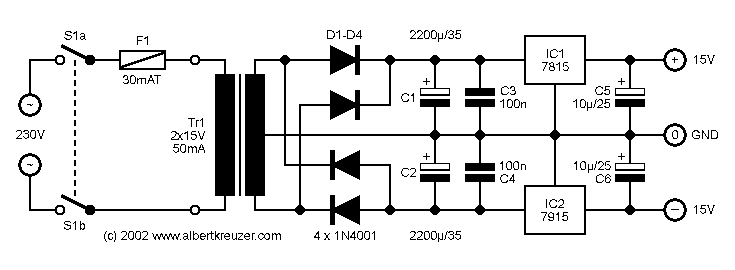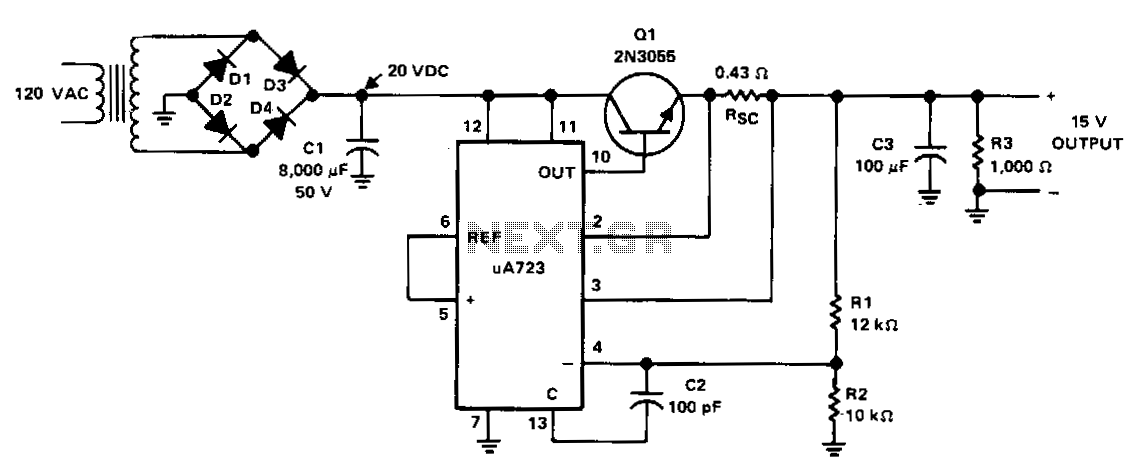
Supply Voltage Indicator
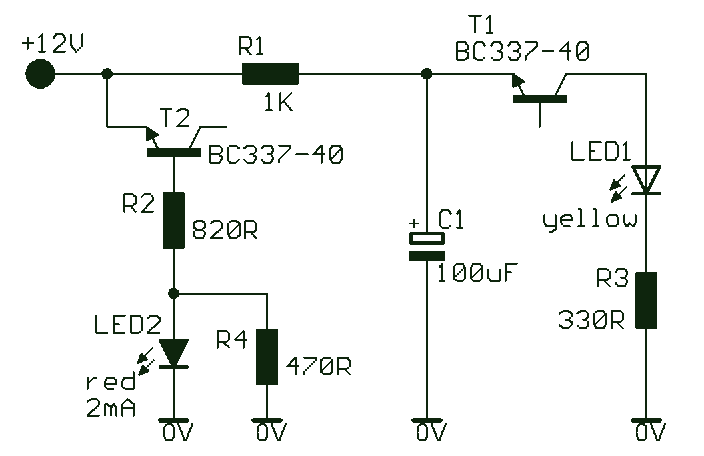
A novel supply voltage monitor which uses a LED to show the status of a power supply. This simple and slightly odd circuit can clearly show the level of the supply voltage (in a larger device): as long as the indicator has good 12 volts at its input, LED1 gives steady, uninterrupted (for the naked eye) yellow light. If the input voltage falls below 11 V, LED1 will start to blink and the blinking will just get slower and slower if the voltage drops further - giving very clear and intuitive representation of the supply's status. The blinking will stop and LED1 will finally go out at a little below 9 volts. On the other hand, if the input voltage rises to 13 V, LED2 will start to glow, getting at almost full power at 14 V. The characteristic voltages can be adjusted primarily.
The described voltage monitor circuit is designed to provide visual feedback on the status of a power supply through the use of two LEDs, LED1 and LED2, each indicating different voltage thresholds. The circuit operates within a specified voltage range, monitoring input voltages from approximately 9 V to 14 V.
When the input voltage is at or above 12 V, LED1 emits a steady yellow light, indicating that the power supply is functioning within an acceptable range. As the voltage decreases below 11 V, LED1 begins to blink. The frequency of the blinking decreases progressively with further drops in voltage, providing an intuitive representation of the power supply's condition. This feature allows users to quickly assess the health of the power supply at a glance. Once the voltage drops below 9 V, LED1 extinguishes, signaling that the power supply is no longer operating within safe limits.
Conversely, when the input voltage exceeds 13 V, LED2 activates, emitting light that increases in intensity as the voltage approaches 14 V. This serves as an alert for over-voltage conditions. The design allows for user adjustments of the voltage thresholds, enabling customization based on specific application requirements.
The circuit likely employs voltage divider networks and comparator circuits to detect the voltage levels and control the LEDs accordingly. A microcontroller or an operational amplifier may be utilized to manage the blinking behavior of LED1, ensuring precise control over the frequency of the blinking as the voltage decreases.
In summary, this voltage monitor circuit is an effective tool for visually indicating both under-voltage and over-voltage conditions, enhancing the reliability and safety of electronic devices by providing clear and immediate feedback on the power supply status.A novel supply voltage monitor which uses a LED to show the status of a power supply. This simple and slightly odd circuit can clearly show the level of the supply voltage (in a larger device): as long as the indicator has good 12 volts at its input, LED1 gives steady, uninterrupted (for the naked eye) yellow light. If the input voltage falls below 11 V, LED1 will start to blink and the blinking will just get slower and slower if the voltage drops further - giving very clear and intuitive representation of the supply`s status.
The blinking will stop and LED1 will finally go out at a little below 9 volts. On the other hand, if the input voltage rises to 13 V, LED2 will start to glow, getting at almost full power at 14 V. The characteristic voltages can be adjusted primaril 🔗 External reference
The described voltage monitor circuit is designed to provide visual feedback on the status of a power supply through the use of two LEDs, LED1 and LED2, each indicating different voltage thresholds. The circuit operates within a specified voltage range, monitoring input voltages from approximately 9 V to 14 V.
When the input voltage is at or above 12 V, LED1 emits a steady yellow light, indicating that the power supply is functioning within an acceptable range. As the voltage decreases below 11 V, LED1 begins to blink. The frequency of the blinking decreases progressively with further drops in voltage, providing an intuitive representation of the power supply's condition. This feature allows users to quickly assess the health of the power supply at a glance. Once the voltage drops below 9 V, LED1 extinguishes, signaling that the power supply is no longer operating within safe limits.
Conversely, when the input voltage exceeds 13 V, LED2 activates, emitting light that increases in intensity as the voltage approaches 14 V. This serves as an alert for over-voltage conditions. The design allows for user adjustments of the voltage thresholds, enabling customization based on specific application requirements.
The circuit likely employs voltage divider networks and comparator circuits to detect the voltage levels and control the LEDs accordingly. A microcontroller or an operational amplifier may be utilized to manage the blinking behavior of LED1, ensuring precise control over the frequency of the blinking as the voltage decreases.
In summary, this voltage monitor circuit is an effective tool for visually indicating both under-voltage and over-voltage conditions, enhancing the reliability and safety of electronic devices by providing clear and immediate feedback on the power supply status.A novel supply voltage monitor which uses a LED to show the status of a power supply. This simple and slightly odd circuit can clearly show the level of the supply voltage (in a larger device): as long as the indicator has good 12 volts at its input, LED1 gives steady, uninterrupted (for the naked eye) yellow light. If the input voltage falls below 11 V, LED1 will start to blink and the blinking will just get slower and slower if the voltage drops further - giving very clear and intuitive representation of the supply`s status.
The blinking will stop and LED1 will finally go out at a little below 9 volts. On the other hand, if the input voltage rises to 13 V, LED2 will start to glow, getting at almost full power at 14 V. The characteristic voltages can be adjusted primaril 🔗 External reference
